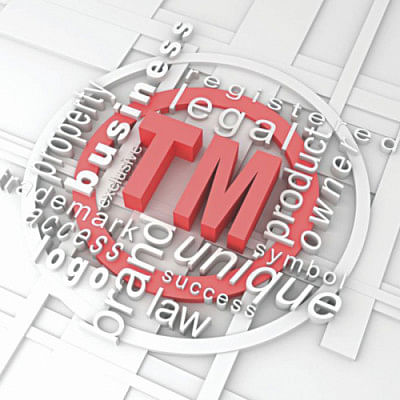Takeout(s) Ltd: Trademark infringement and/or passing off?

The question of whether Takeout Ltd (hereinafter “Takeout”) is associated with Takeout 2.0 Cafe & Restaurant Ltd (hereinafter “Takeout 2.0”) is vehemently answered in the negative. On 15 October 2017, Takeout's statement on Facebook denounced the latter — declaring that the two are unrelated. Is this tantamount to a prima facie case for passing-off, if not trademark infringement? Before answering this question and elucidating passing-off, for the sake of understanding, let me briefly discuss trademark infringement.
In Bangladesh, trademarks are governed by the Trademarks Act 2009, and pursuant to Section 2(8), a “trademark” is a registered mark, which can be, inter alia, a name, words, or a combination of colors or the enumerated elements (hereinafter “mark”) that indicates a connection between the goods traded and the proprietor entitled to use that mark. A trademark is “registered” when it is recorded with the Trademarks Registry Wing of the Department of Patents, Designs and Trademarks. Section 26(2)(a) provides that a trademark is infringed when a person who is not the registered user (one entitled to use the mark) of the mark uses the mark in the course of business providing goods or services similar to that for which the trademark was originally registered. In simpler terms, if a company, which is a vendor of burgers, is a registered user of a mark, then any company selling burgers thereafter and using a similar mark has infringed the earlier's trademark. However, section 24(1) prohibits instituting a case for trademark infringement if the trademark is not registered.
The preceding paragraph begets the inquiry of whether Takeout is registered a mark. Unfortunately, I am incognisant of whether one was. If I accept registration occurred, then Takeout has grounds to commence proceedings against Takeout 2.0. If, however, Takeout failed to register a mark, while they would be disallowed from litigating trademark infringement, since Bangladesh is a common law country (similar to, inter alia, England and Canada), a remedy available to the company would be the tort — a civil wrong — of passing-off. What, though, is passing-off?
Passing-off is the protection of the plaintiff's goodwill, which is the power to attract and retain customers, from misrepresentations made by the defendant that his goods are those of the former's. The components of passing-off are the following: (1) plaintiff has established goodwill; (2) defendant misrepresented information; and (3) the diversion of customers caused actual, or threatened, damage to the plaintiff's reputation. In seriatim, I shall probe each element.
First, passing-off protects one's proprietary interests over a business, which is acquired through the production of quality goods with said goods being recognised by a distinctive mark. In Ciba-Geigy Canada Ltd v Apotex Inc, the Supreme Court of Canada held that one must examine the “get-up,” which is the visual appearance of a product and includes the packaging, shape, and color of the product. To establish this element, Takeout must demonstrate that its product is unique — containing a distinct appearance that is identified by customers, which would ipso facto establish goodwill.
Second, the gravamen of passing-off is the requirement to prove a misrepresentation that damages the plaintiff's goodwill. The classic case is of a business who uses the same mark of the plaintiff to confuse consumers into thinking that his products are that of the plaintiff's — known as source misrepresentation. As in, a new vendor of burgers cannot call its business “Burger King,” or for the purposes of this commentary, “Takeout.” It is irrelevant whether Takeout 2.0 publicly stated a relation with Takeout; rather, it is the name itself that is the misrepresentation.
The pertinent question is whether the misrepresentation is likely to cause confusion in the mind of the casual customer who is unlikely to scrupulously examine products. I answer affirmatively, adding that (1) the name “Takeout 2.0,” (2) the font used to compose the restaurant's name, along with the color combination of yellow, black, and red on its placard, and (3) the font and color combination used to draft the menu can lead the casual customer into thinking Takeout 2.0 is associated with Takeout, for the reason that the former has emulated the latter in extenso, rendering their products indistinguishable. As in, Takeout retains a reputation with its name and a confusingly similar name, selling the same products to the public and operating in the same geographic region can confuse consumers.
Third, the preponderance of Bengalis may be unable to discern between the two companies, which would be inimical to the goodwill of Takeout, as it would divert customers from the original source to an ersatz. If customers have been diverted, then it is actual damage and Takeout is entitled to an award of damages and/or an injunction. If customers have yet to be diverted, then it would be a case of threatened damage, warranting an injunction sans damages.
Overall, the usage of the name “Takeout 2.0” to sell the same products to the public in the same geographic region as Takeout is a misrepresentation and has the strongest probability to create confusion in the mind of the casual customer. Therefore, it is recommended that Takeout 2.0 change its name and characteristics to distinguish itself from the original, and that the Office of the Registrar of Joint Stock Companies pay closer attention when permitting companies to register names so that they are not confusingly similar.
The writer is Lecturer in Law, North South University.

 For all latest news, follow The Daily Star's Google News channel.
For all latest news, follow The Daily Star's Google News channel. 



Comments